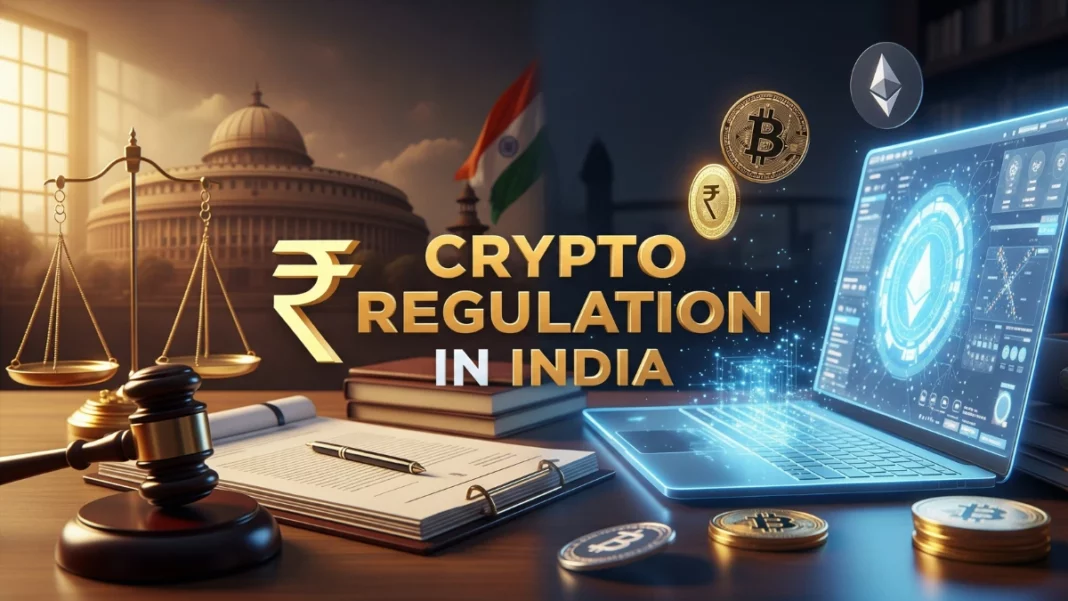The international cryptocurrency in India is at an essential inflection point. After years of uncertainty, formed with the aid of fluctuating stances from both the Reserve Bank of India (RBI) and the Securities and Exchange Board of India (SEBI), many stakeholders are asking: Is a regulatory comeback around the corner? What is the Crypto Regulation in India?
This blog offers an in-depth, expert analysis of the evolving RBI on cryptocurrency and SEBI crypto coverage, clarifies the contemporary Bitcoin prison fame in India, and explores capability next steps for regulators and what they suggest for traders, marketers, and ordinary customers.
Understanding the Rollercoaster: Can Everyone Follow It?
For many Indians lovers, builders, buyers, and institutional investors, the current Crypto Regulation in India has been deeply frustrating. As one crypto startup founder positioned it, “Every time we build a characteristic, we are surprised if it will get shut down day after day.” This sentiment captures the uncertainty that comes with missing clear pointers. On one hand, a gigantic hobby and skills; on the other, the consistent worry that policy shifts might wipe out progress overnight.
Policy Milestones That Shaped Crypto Regulation in India
RBI on Cryptocurrency: The Banking Ban Era (2018–2020)
- April 2018: The RBI issued a circular barring regulated financial establishments from servicing crypto organizations—successfully crippling India’s nascent crypto atmosphere.
- March 2020 – Supreme Court Reversal: In a groundbreaking verdict, the Supreme Court overturned the RBI ban, reviving exchanges and allowing users to resume trading. This bolstered self-belief and helped fuel a resurgence in India’s crypto interest.
SEBI Crypto Policy in the Making
SEBI, traditionally responsible for regulating inventory markets and funding property, has, in recent years, begun studying whether or not certain token offerings might be categorized as securities.
- 2022–2023 SEBI Working Groups: Taskforces evaluated whether digital assets—especially decentralized monetary tokens (DeFi tokens) and certain stablecoins—ought to fall within SEBI’s regulatory remit.
- Public Consultations: SEBI invited industry stakeholders for public comments on token category frameworks, although formal tips continue to be pending.
Three Bitcoin Legal Status India: Ambiguity Continues
Unlike countries with direct crypto bans or full popularity, India’s role in Bitcoin prison fame remains ambiguous. Bitcoin isn’t always illegal to hold or exchange, but:
- It lacks a formal reputation as a felony.
- Regulatory oversight relies upon how the asset is classified—if regarded as a protection, it is able to fall below SEBI; if deemed a commodity, regulators, just like the Forward Markets Commission (FMC) or a destiny crypto-specific authority, might also practice.
- Taxation indicators: In early 2022, a flat 30% tax on crypto profits, plus 1% TDS on transactions, was introduced. This highlights reputation but also more desirable scrutiny.
Credibility: Where We Stand Today—and What Experts Say
Latest Developments from RBI
- Governor’s Tone Shift: In mid‑2025, the RBI Governor remarked that a “calibrated regulatory framework” for digital belongings may be essential if global developments remain, hinting at the possibility of a middle course in preference to outright prohibition.
- Central Bank Digital Currency (CBDC): The launch of e‑₹ (digital rupee) for retail and wholesale use marks the RBI’s maximum tangible exploration of virtual currency; though this isn’t crypto itself, it signals the imperative financial institution’s interest in virtual ecosystems.
SEBI’s Forward Movement
- Digital Assets Working Group 2024 Report: Experts have proposed a multi-tiered framework, classifying tokens into protection tokens, application tokens, and payment tokens, each with its policies underneath SEBI’s purview.
- Ongoing Hearings: SEBI continues to keep discussions with Indian exchanges, fund managers, and custodians, evaluating registration norms and investor safety mechanisms.
International Context and India’s Options
Looking globally, many economies are adopting hybrid models—regulating crypto, no longer banning it:
- Switzerland permits regulated tokens under FINMA,
- The U.S. treats certain tokens as securities under the SEC,
- Singapore offers licensing through the Monetary Authority of Singapore (MAS),
- India now faces pressure to determine genuinely—either combine with global norms or risk missing out.
What Might RBI and SEBI Do Next?
Below are four sensible scenarios based on ongoing signals from regulators and global benchmarks:
Scenario A: A Combined Framework
- RBI: Crafts a regulatory sandbox that lets in token trading and custody under strict compliance.
- SEBI: Rolls out a phased rollout of suggestions classifying extraordinary token kinds (protection vs. Utility vs. Fee).
This hybrid version mimics procedures inside the EU’s MiCA and Singapore’s licensing regime.
Scenario B: RBI Takes the Lead
- RBI establishes licensing for crypto exchanges/custodians and troubles complete regulations around KYC, audits, cyber‑hygiene, and capital reserves.
- SEBI remains on the sidelines unless a token is on obvious safety.
This alternative permits the RBI to make clear banking linkages early; however may limit capital marketplace integration.
Scenario C: SEBI Takes the Lead
- SEBI defines tokens that qualify as securities, bringing them under its regulatory oversight and opening retail, debt, or mutual‑fund investment avenues.
- RBI remains focused on CBDC development and monetary signaling.
Ideal for tokenized funding assets, but it might also go away stablecoins and price tokens unregulated.
Scenario D: A New “Crypto Authority”
- Regulators create a unified crypto regulator, just like the Financial Conduct Authority (FCA) within the UK or Australia’s ASIC.
- This solves fragmentation; however, it may add bureaucratic complexity and delay the rollout.
Credible Signals That Shape the “Comeback”
- CBDC Rollout & Pilot Expansion: If RBI scales up e‑₹ usage or partners with non-public blockchain firms, this signals openness to digital asset frameworks.
- SEBI Token Guidelines by using End‑2025: A working paper or comprehensive recommendations could signal extreme intent to regulate tokens transparently.
- Joint RBI‑SEBI Taskforce: The Formation of this sort of group might suggest coordinated efforts to deal with banking, securities, and AML mutually.
- Industry Engagement: Increased openness—especially from unicorn‑sponsored Indian crypto corporations—illustrates a willingness to comply and collaborate.
Global Comparisons: Learning from the Rest
- Singapore: MAS troubles bills and digital assets up to a licensing hierarchy.
- EU (MiCA): Creates unified token classes—asset‑referenced tokens, e‑cash tokens, and crypto‑assets—each regulated with clarity.
- U.S.: Mixed signals: SEC and CFTC are reactive; regulatory fragmentation slows on ramps. India can goal for a cohesive version to keep away from U.S.-style confusion.
Final Takeaway
The question isn’t if but when India will officially embrace crypto policies. A complete “Crypto Comeback”—fueled via a coordinated motion from the RBI on cryptocurrency and SEBI crypto coverage—is within attain. The result? A gadget wherein:
- Bitcoin felony repute in India is crystal clear
- Consumer self-belief is restored
- Blockchain innovation can flourish underneath guardrails
Final Thoughts
If you’re engaged within the crypto landscape—whether or not as an investor, user, startup founder, or policy analyst—this is the time to prepare. Track RBI and SEBI bulletins carefully. Seek clarity on licensing, token lessons, custody standards, and taxation, while you maintain building, studying, and navigating India’s new regulatory terrain. The subsequent Crypto Regulation in India policy wave ought to either free up historic growth or stall momentum. And whichever direction India takes, it’ll define the Bitcoin criminal fame in India and the crypto ecosystem for years to come.
India’s digital destiny may additionally very well rely on locating the proper balance: allow crypto to innovate but regulate it well. Stakeholders ought to live vigilant, proactive, and organized for rule units that would arrive imminently.
FAQ
Is cryptocurrency a crime in India right now?
Yes, cryptocurrency is criminal to buy, maintain, and exchange in India. However, it is not identified as criminal tender—you can not use Bitcoin or different tokens to make legitimate payments like you would with rupees. While the Bitcoin felony reputation in India is not prohibited, it remains unregulated, which means there is no reputable safety or framework yet.
What is the RBI’s stance on cryptocurrency in India?
The RBI on cryptocurrency has been careful. After banning crypto-related banking transactions in 2018 (later overturned in 2020), the RBI continues to raise worries over economic balance, fraud, and capital outflow. However, the latest feedback from the RBI proposes they may paint on a calibrated regulatory approach rather than impose a ban.
What function does SEBI play in crypto law?
SEBI’s crypto policy remains evolving. SEBI is exploring whether certain crypto properties—especially tokenized securities or investment products—fall under its regulatory jurisdiction. It has formed running agencies and sought public input but hasn’t released formal guidelines yet. Expect SEBI to play a key role once crypto is assessed legally under asset classes.
Also Read:
Crypto News India: Market Trends and Blockchain Insights
David William comes from an Engineering background, with a specialization in Information Technology. He has a keen interest and expertise in Web Development, Data Analytics, and Research. He trusts in the process of growth through knowledge and hard work.


